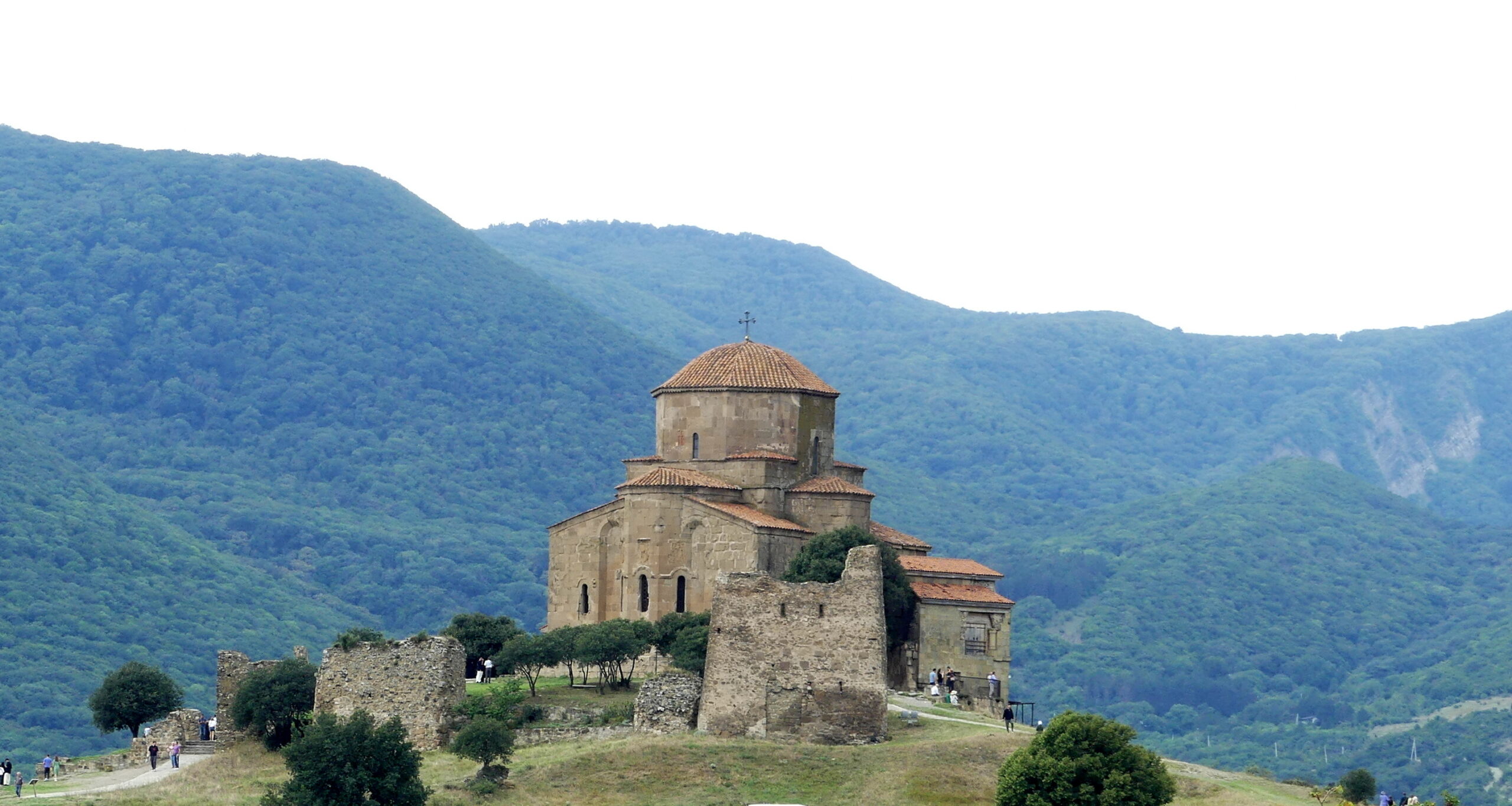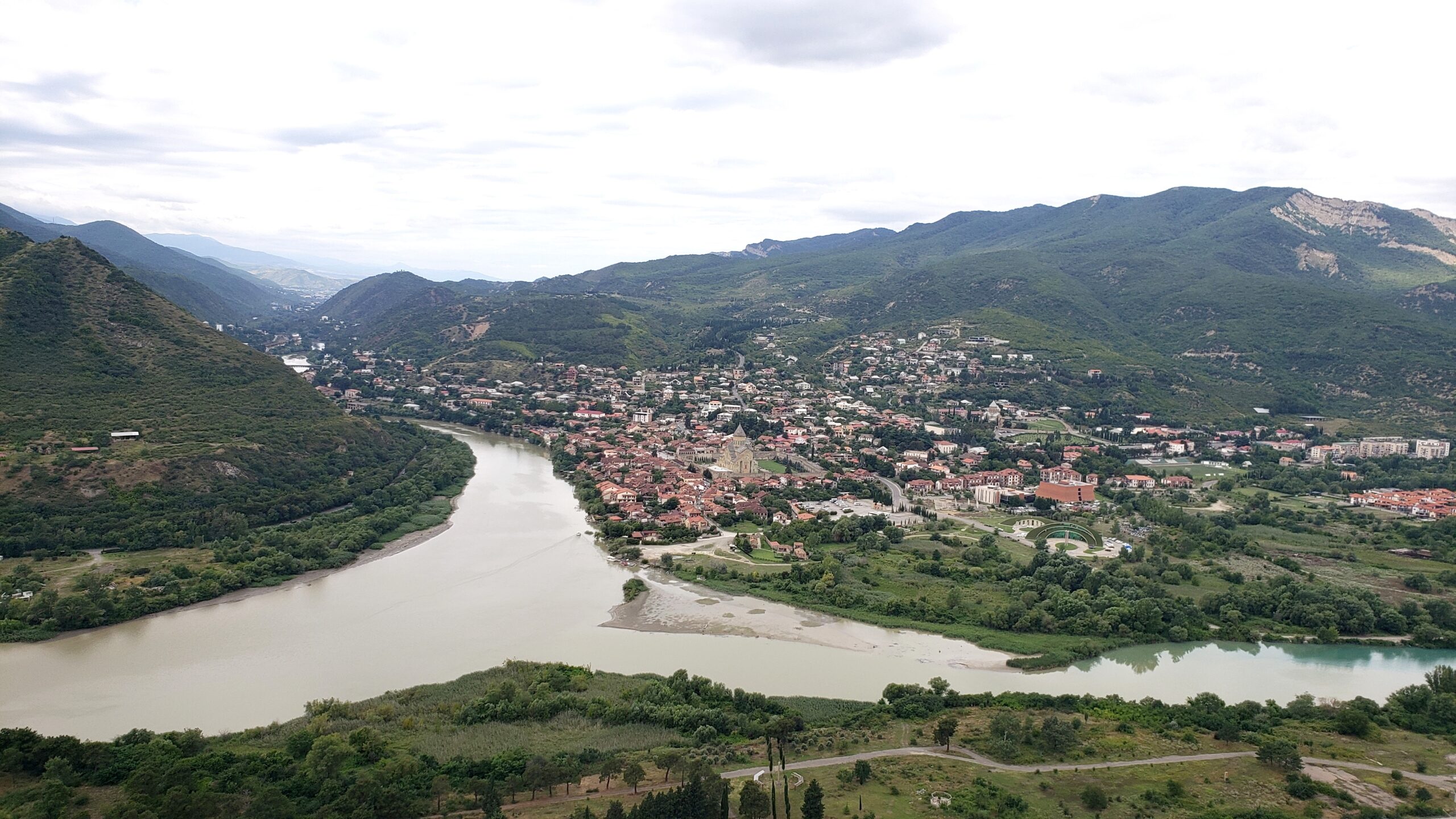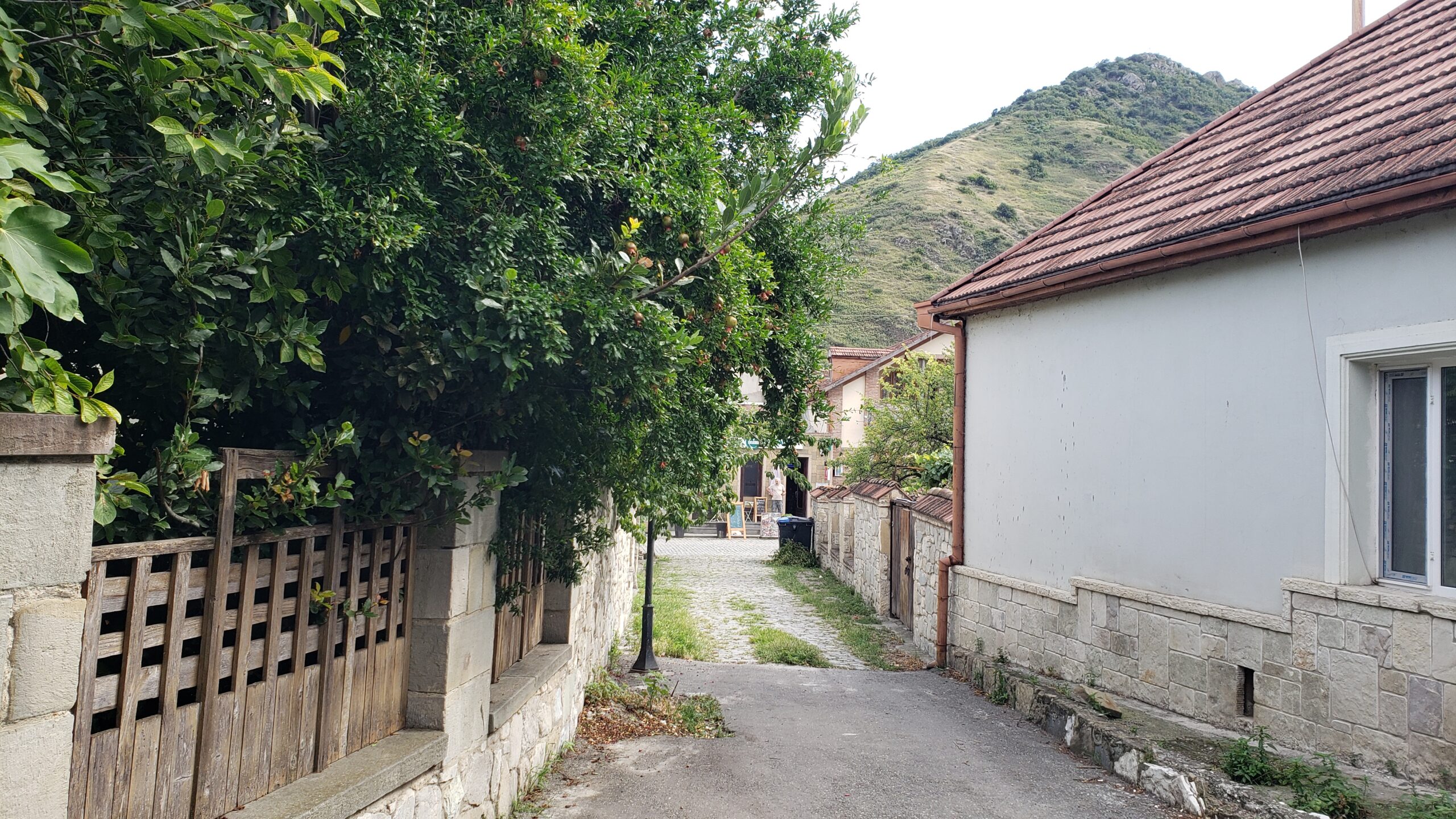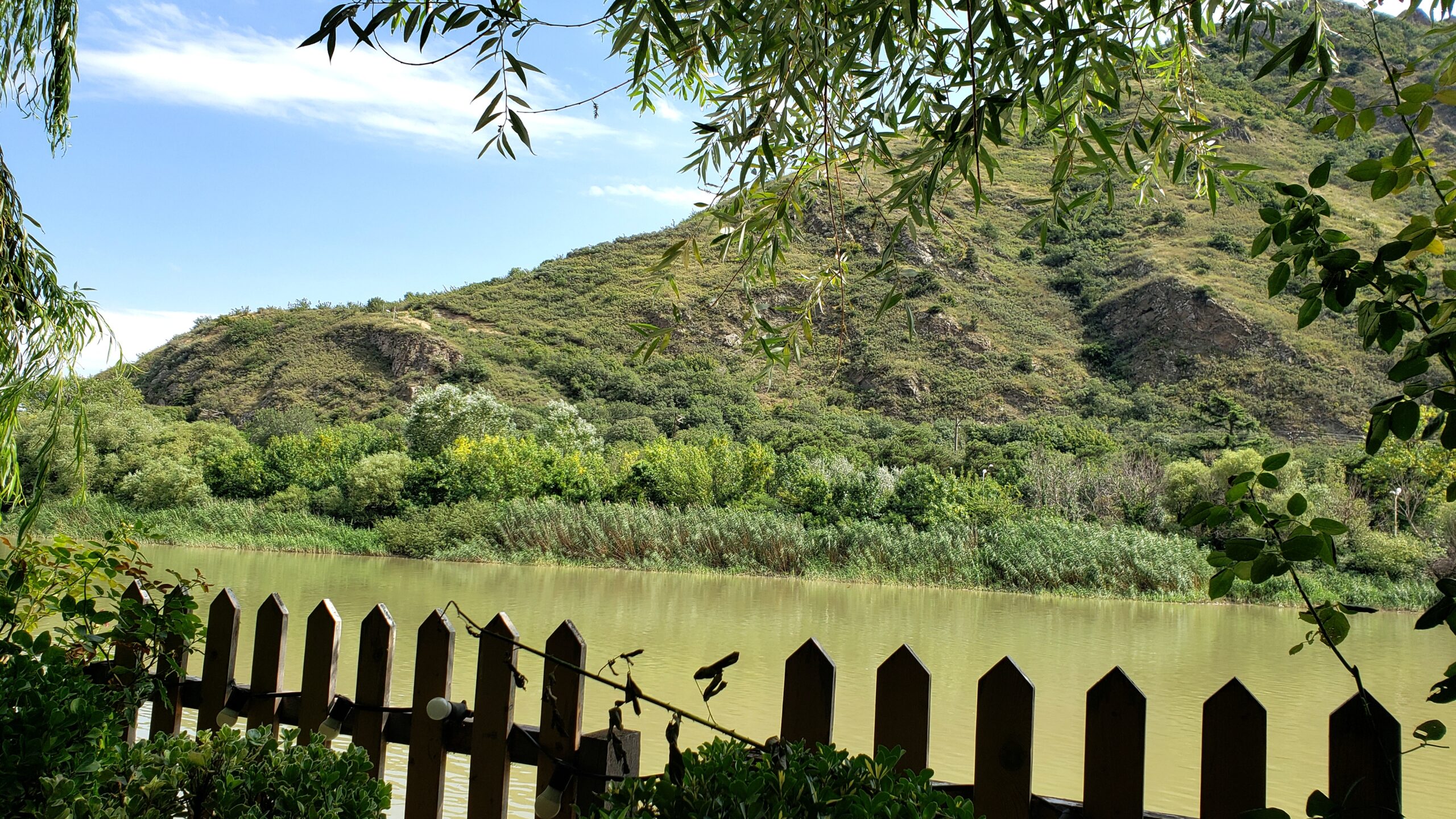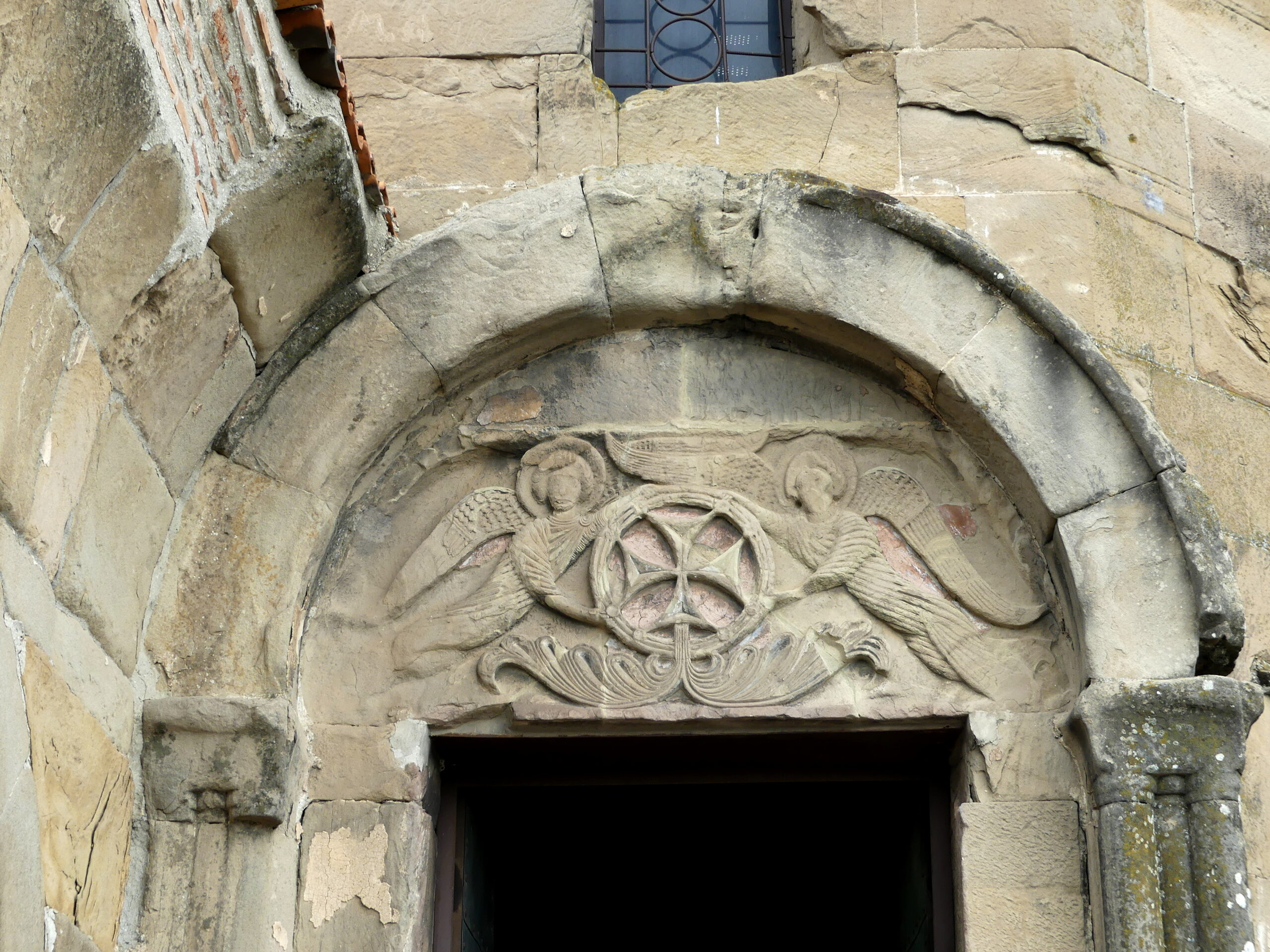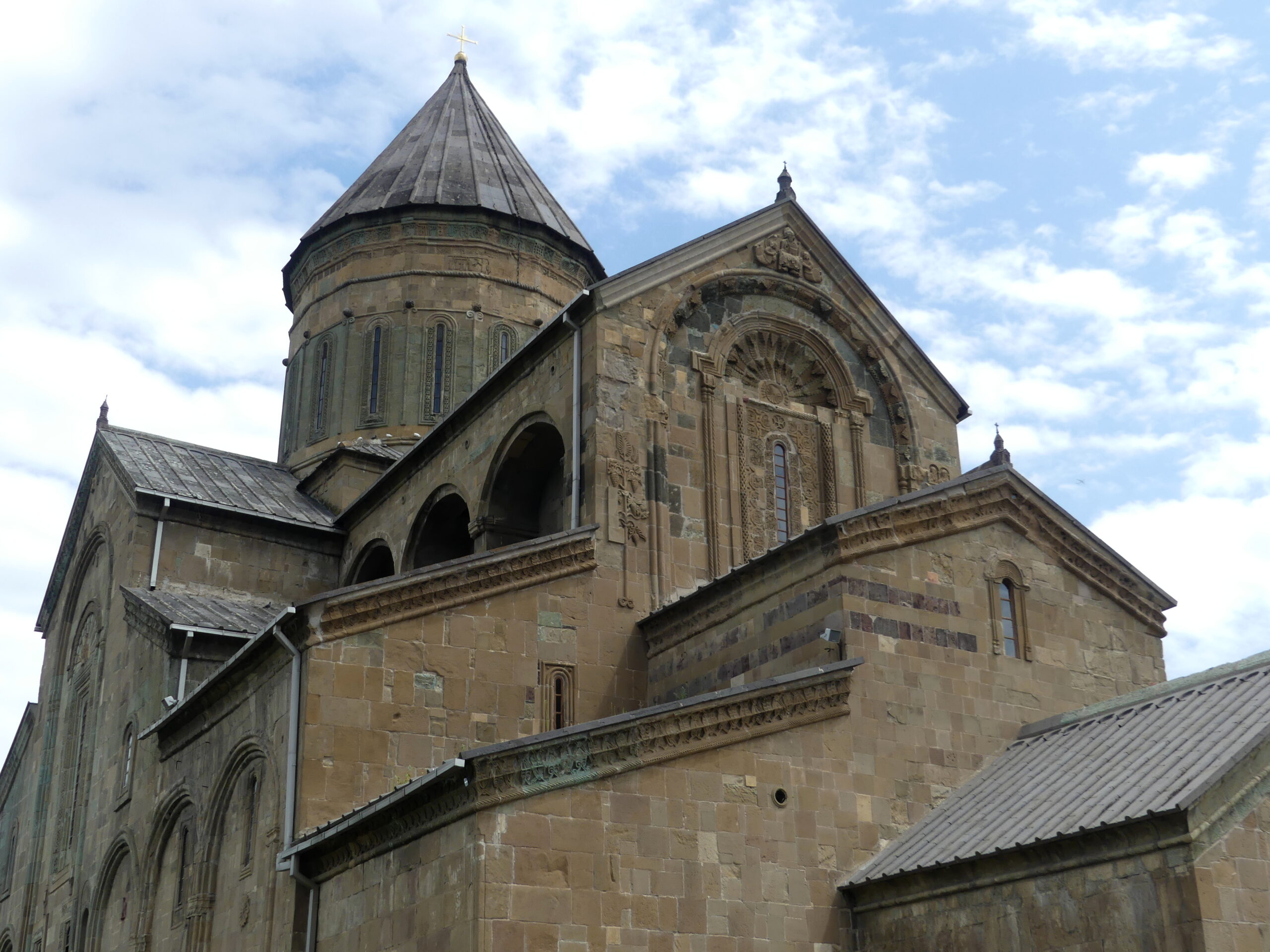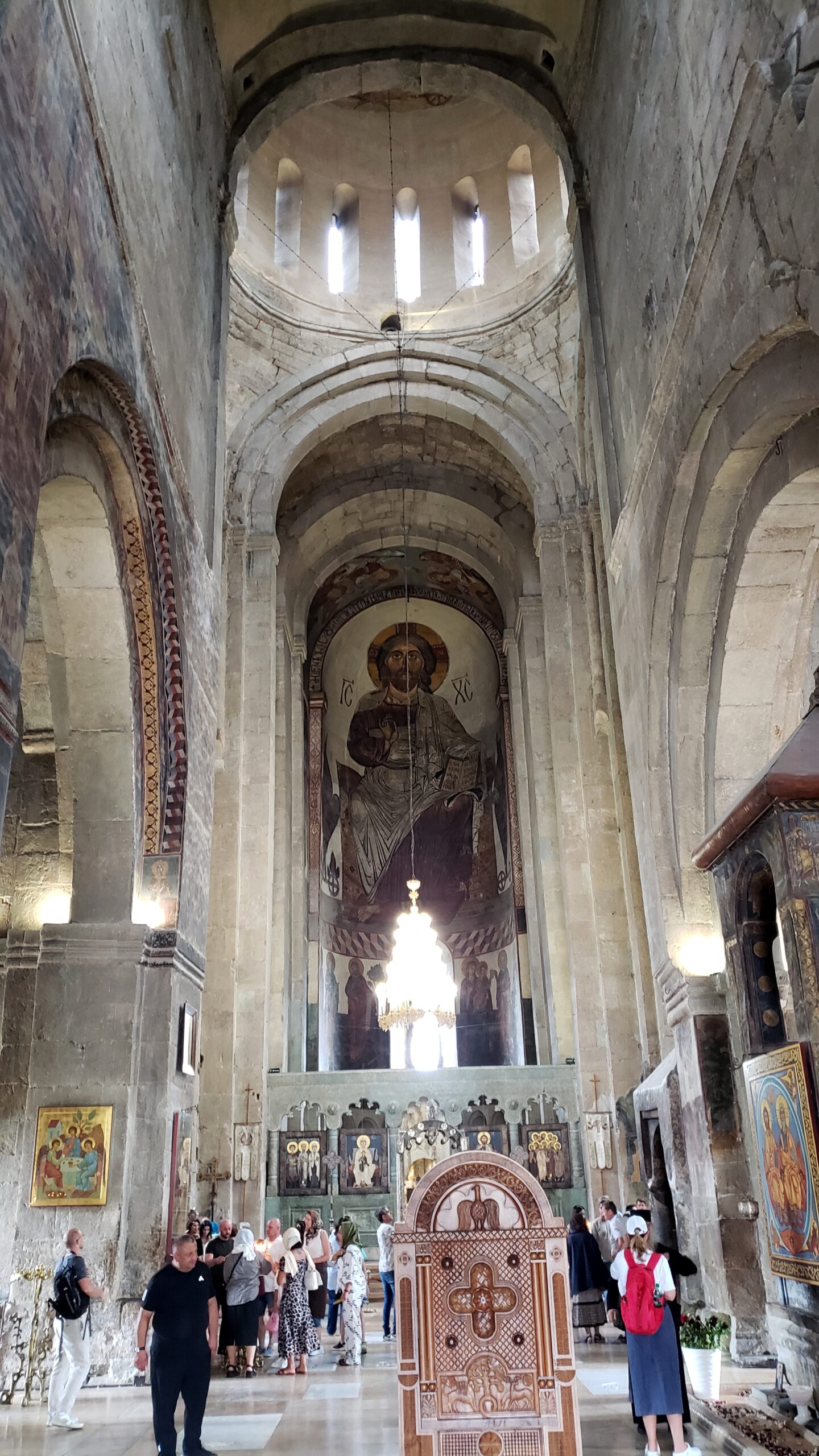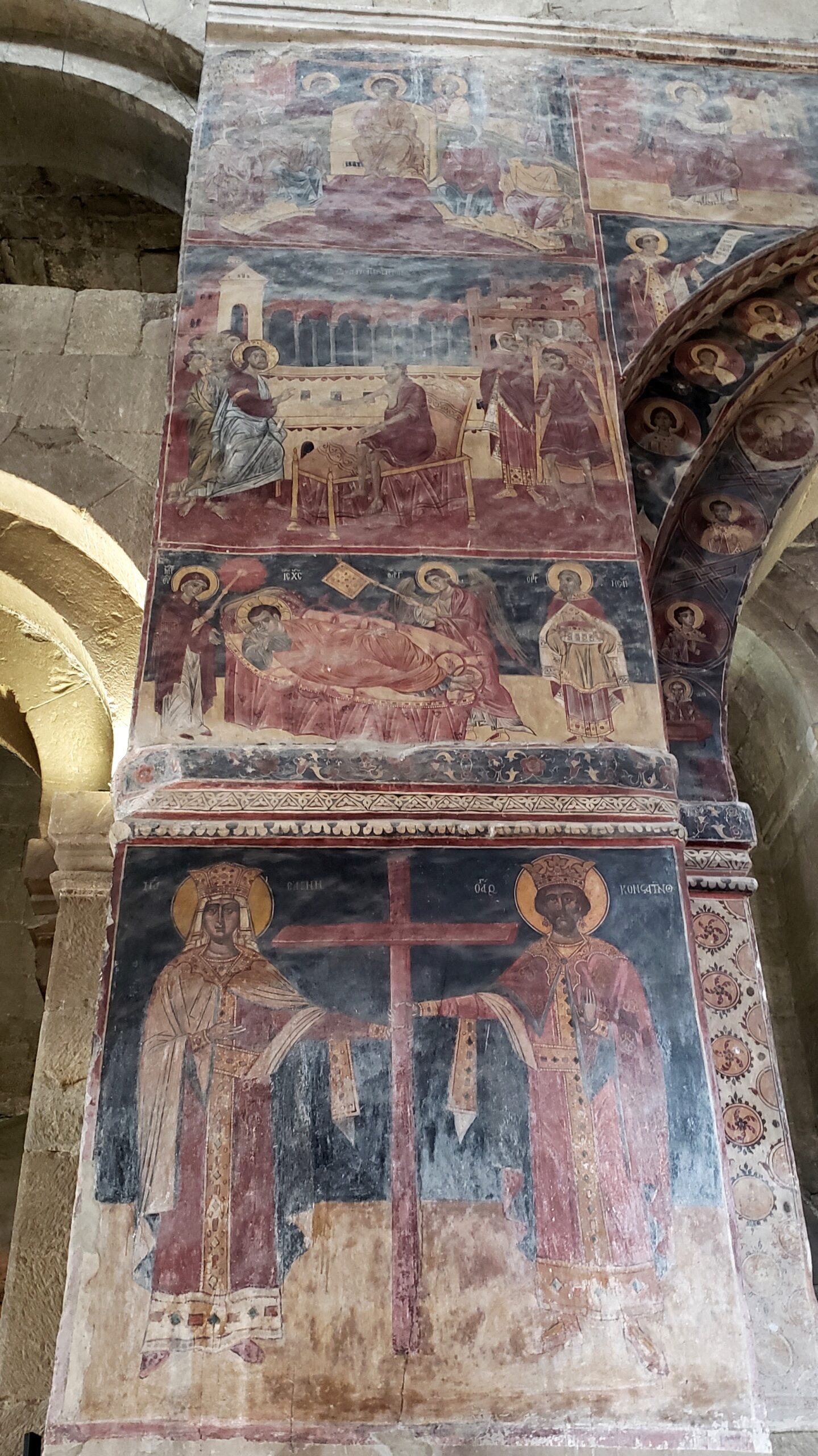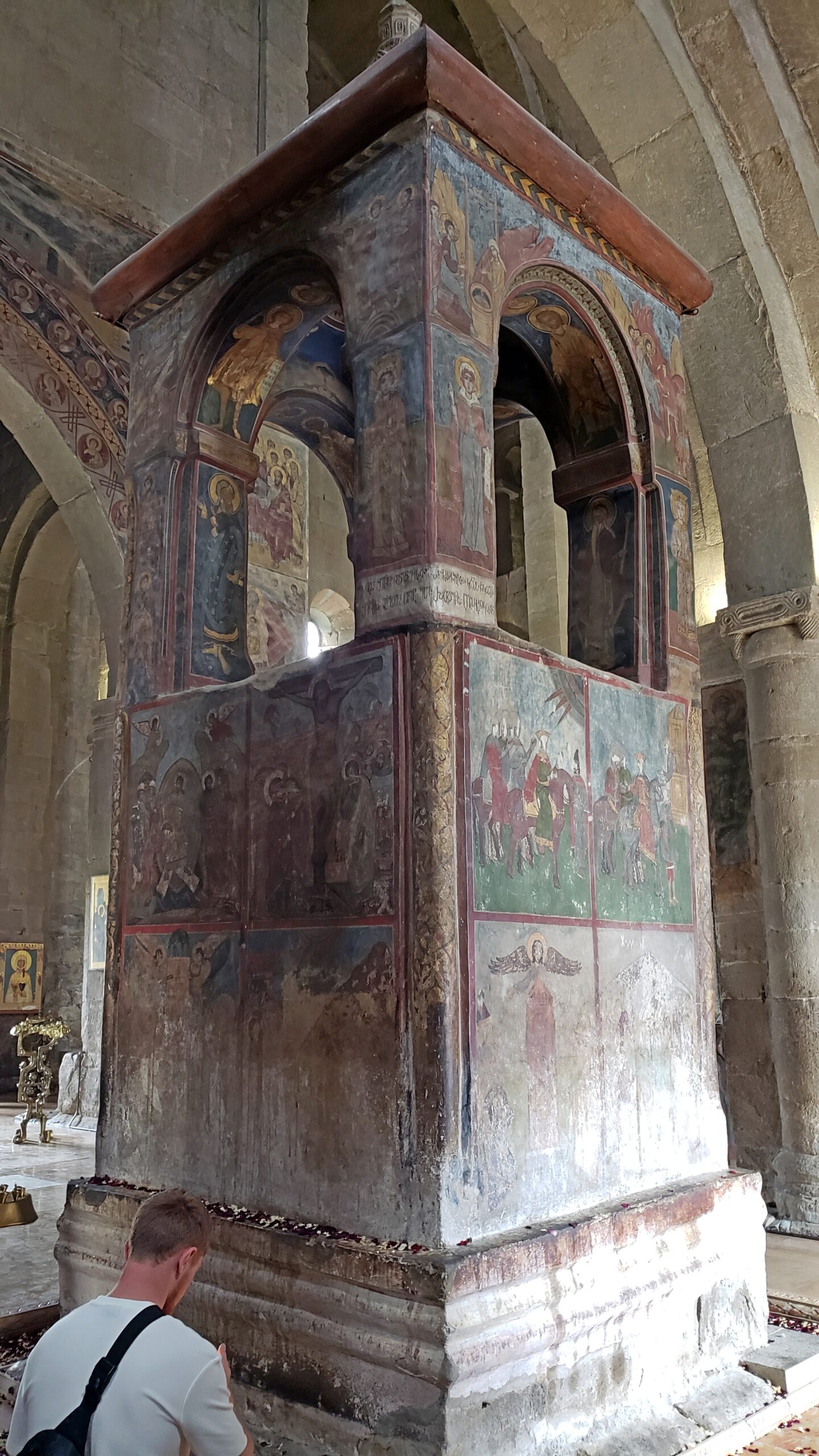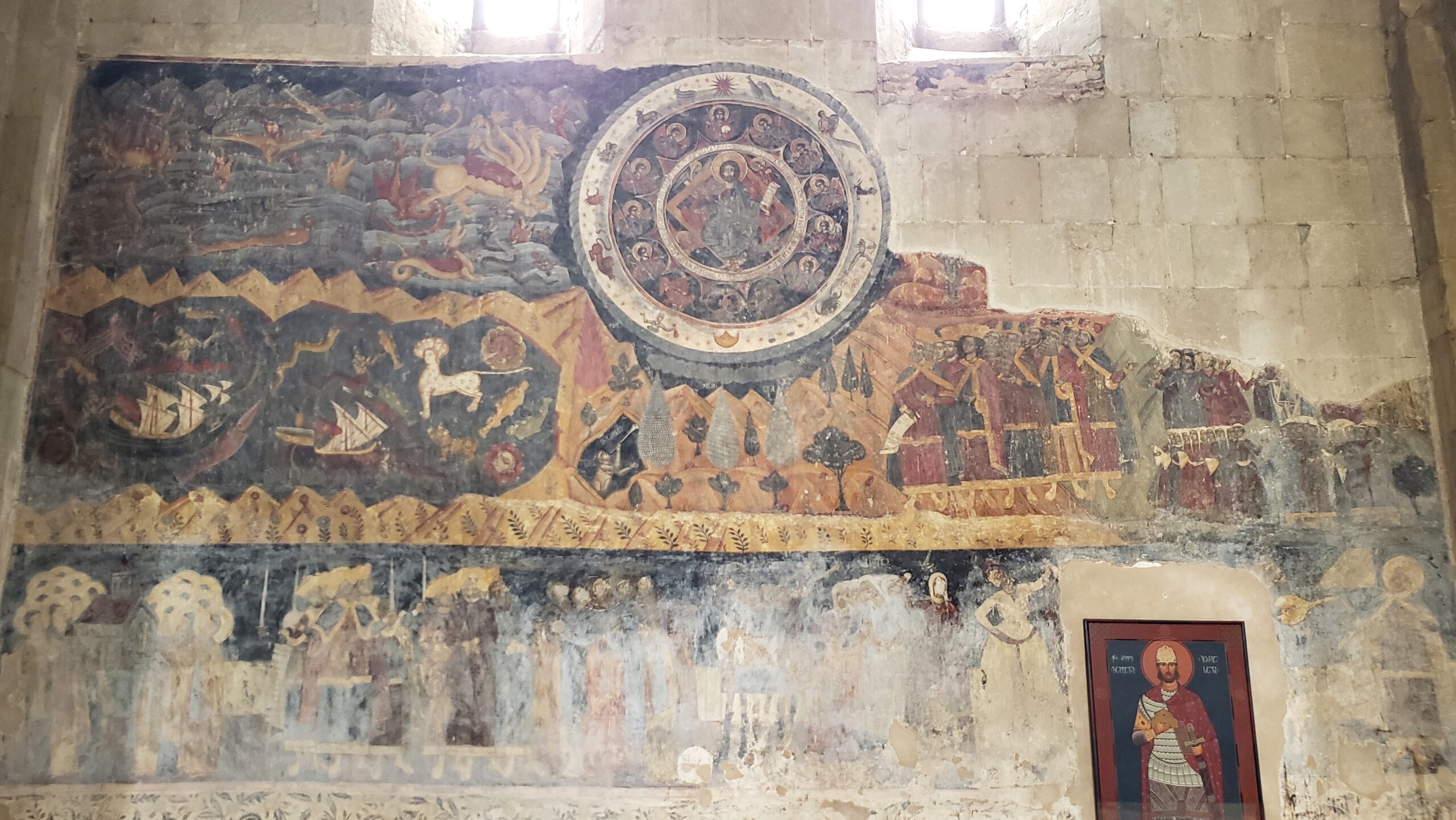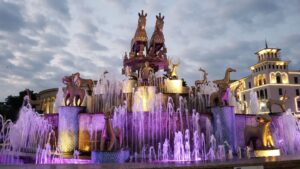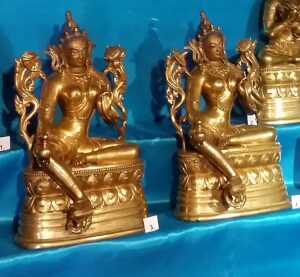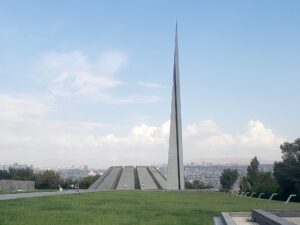For 800 years, from the 3rd century BC to the 5th century AD, Mtskheta was the capital of Georgia, at the confluence of two rivers and key trading routes – less than an hour from the center of the current capital Tbilisi.
Here is the confluence as viewed from the Jvari Church, with a gorgeous valley winding into the distance. The ample trade and agriculture through here sustained the city.
The older part of Mtskheta now consists of attractive lanes weaving along charming stuccoed houses with wood porches and fences – plus plenty of restaurants and shops for today’s visitors.
We found a lovely riverside spot in town to have lunch after our pilgrimage to the churches of Mtskheta.
Often destroyed and rebuilt through the centuries, Mtskheta is still considered especially holy in the Orthodox religion, and the home of two of the most revered of the Georgian Orthodox churches, UNESCO World Heritage sites.
Jvari Monastery has hovered atop a ridge over the city since the 4th century when Georgia was one of the first countries to convert officially to the new Christian religion. Legends abound here about the pioneering female saint Nino, the transport here of Christ’s robe, and the miraculous raising of a pillar at the site of the huge 11th century cathedral in the city center. That fortress-like Svetitskhoveli church has prospered despite much damage over time as the burial place of Georgian kings and the ceremonial choice of bridal couples.
Perched on its own ridge, the Jvari Church is an arresting sight, but more revered by pilgrims for its legendary history.
Various biblical scenes are carved into the stones of the Jvari Church, with strangely ethereal figures like these angels on a mission.
The 11th century Svetitskhoveli Cathedral – named for that legendary pillar that rose miraculously to anchor the original 4th century church – has weathered a lot of destructive conflict. Yet it was still quite imposing when we entered the fort-like surrounding walls. The attractive natural and religious images carved on this face are quite distant but well worth some neck craning.
The vaulting nave of the massive 11th century Svetitskhoveli Cathedral
Ancient biblical scenes and honored royals still glow on the painted walls of the Svetitskhoveli Cathedral
A young man prays at this colorful square pillar with a crowning arch within Svetitskhoveli Cathedral. Legend says that Christ’s robe is laid below the pillar.
The largest surviving fresco in the nave of Svetitskhoveli Cathedral, a complex creation with a central wheel of apostles and zodiac emblems, water scenes to the left, a royal procession toward a woman in somewhat Persian costume below, a huge trumpeter at the bottom right, and another elaborate procession above the trumpeter heading back toward a mountain landscape in the center.
(To enlarge any picture above, click on it. Also, for more pictures from Georgia, CLICK HERE to view the slideshow at the end of the itinerary page.)


